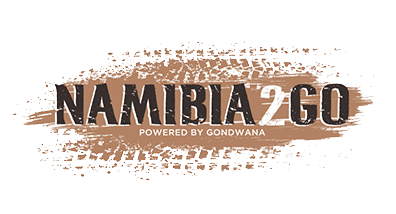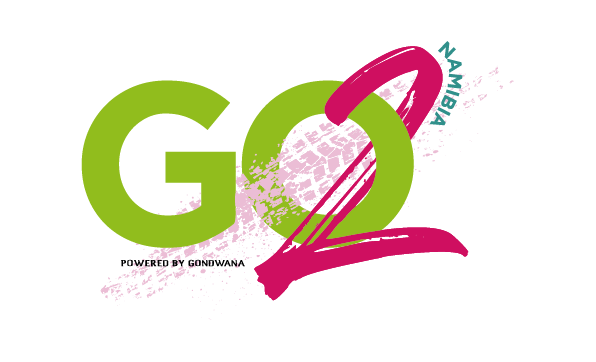Their origins steeped in mystery, the wild horses in the Namib Desert have captured imaginations and touched hearts. These resilient animals have survived in the desert for more than a century and over the years have become a major tourist attraction in southern Namibia.
The book ‘Wild Horses in the Namib Desert’ (now out-of-print) is the outcome of a collaboration, revealing the little-known history and behaviour of the wild horse population. Manni Goldbeck sheds light on the horses’ origins, taking the reader back to the tumultuous time of World War l and exploring the more plausible theories, while Telané Greyling (PhD Zoology) shares her knowledge of the intriguing behaviour of the Namib horses gleaned from her many years of research and life amongst the horses. Freelance writer, Ron Swilling, created a text from the material giving it a breath of life. Finally, from the love for the horse and all things wild, the book was born.
An equine biography of the Namib wild horses, the book traces the beginnings of Equus groups on the sub-continent, following their journey over time to Namibia and the present day.
Join us every Sunday as we share the wild horses’ journey with you . . .
(If you’ve missed any of the posts, you can find them on the PadlangsNamibia website.)
CHAPTER 2: The past cont . . .
A step into the imagination
It only takes a small step of the imagination to visualise the scenario and the state of chaos in the area during the war period of 1914/1915. With a world war on the doorstep, it was a traumatic time for German South West Africa when many locals and farmers were forced to flee the volatile situation, leaving behind homes, farms and livestock. The war situation demanded that every available horse be used for the German war effort. As the Union forces landed on the south-western shore, the German troops retreated into the interior. It wasn’t long before the remaining local inhabitants were sent to the Union of South Africa for internment leaving their homes, lives and loves in German South West Africa. Gruelling months of pursuit through the desert followed when the armies may have abandoned lame or sick horses and stragglers to fend for themselves. Eventually, the soldiers reached Garub and Aus with their multitude of horses, and it seemed that full-blown confrontation was close at hand. Never again would so many horses be massed in this small section of the country as in the summer of 1915: 6 000 Union horses assembled at Garub, 1 500 German horses at Aus, as well as the additional horses from the Kubub stud farm.
As the German aircraft departed from the dusty encampment of Garub after dropping its bombs, the sound of the plane droning away into the heavens would have merged with the mayhem: panicked horses whinnying in terror, rearing amidst dust clouds and confusion, ears back, eyes large with fright, racing away from the army barracks and the profusion of tents into the surrounding countryside. In their haste to pursue the Germans, the Union forces would not have had sufficient time to recover all of their horses. These would have gathered in the mountains initially where natural water holes held water at the end of the summer rainfall period, eventually making their way back to the area’s only permanent source of water at the Garub borehole when the pools ran dry.

It seems highly likely that stray horses formerly belonging to Emil Kreplin from the Kubub stud farm, approximately 35 kilometres southeast of Garub, made their way to Garub in the early 1920s following good grazing after patchy rainfall in the area, joining the horses that were already massed there dependent on Garub’s water. Kreplin had leased the 50 000-hectare farm in 1911 from a Dr Paul Konrad Niethammer, a rich German industrialist who had bought the land from the Deutsche Kolonialgesellschaft for his youngest son to farm. At the time of the sale the Deutsche Kolonialgesellschaft was taken over by the newly established government of German South West Africa, resulting in a dispute that dragged on until 1937 when the farm was finally transferred into the family’s name. By this time Herr Niethammer had died, a world war had swept past and the country had fallen into the hands of the Union of South Africa. The farm, essentially remaining lordless, was leased over the years until it was sold in 1950 when the family felt the ravages of World War ll.

The Kubub farm was in an elevated area safe from horse sickness, and being a fair distance inland from the desolate desert terrain of Lüderitzbucht enjoyed improved weather and grazing, and a supply of underground water. It was therefore an ideal place for the creation of a stud farm to provide horses for the bustling south-western corner. Kreplin was one of the first to bring in higher quality horses for racing and breeding purposes. Already in 1910, there are records of him introducing two Arabian mares into the Lüderitzbucht racing arena. Newspaper clippings praise his winning mare, ‘Gala girl’, for her first win. This affluent way of life changed abruptly after the outbreak of hostilities. Kreplin was interned for the duration of the South West Africa Campaign and later lost all his remaining wealth in the depression years that cloyingly dragged on the coat tails of the war in Europe. It is assumed that he wouldn’t have had sufficient resources to attend to his assets in South West Africa, resulting in the abandonment of the Kubub horses. Ownerless, left to themselves and without fences to contain them, the horses would have begun to scatter in groups, leaving the Kubub area that had been overgrazed during the war period, following green grazing and water sources towards Garub, becoming wilder over time.
Photographic evidence of the Kubub stud farm (scenes with approximately 150 horses, taken in 1912 and 1919), unearthed by hobby-historian Walter Rusch, reveals remarkable similarities in conformation and characteristic markings between the Kubub horses and the present-day wild horses. The Kubub breeding stock would have comprised a large proportion of mares and foals, in contrast to the military horses which were probably predominantly geldings. As mares have a larger (sixty per cent) influence on the gene pool, a significant amount of mares would have had to be part of the group assembled at Garub. From the size of the present-day wild horse population, it can also be deduced that a significant population of at least fifty horses or more would have been needed to initiate the wild horse population in order to reach their present numbers. It therefore seems plausible that the Kubub horses constituted the core group of the wild horse population.

Some of the Kubub breeds evident in the wild horse population are Hackney, Trakehner and Shagya Arab. Interestingly, none of the grey (i.e. white) genes have survived in the population, only the bay, chestnut and black are still present.
Later on, in 1984, FJ van der Merwe from the Department of Agriculture, South Africa, would write: ‘The Namib Desert Horses are clearly not just any old farm horses turned loose, but something very special derived from the excellent gene pool that was existent in pre-1914 German South West Africa … ’
The core group of stud horses, together with the Union horses from Garub and horses abandoned by the Schutztruppe, Union troops, settlers, railway workers and others, would have formed the ancestors of the wild horses seen today at Garub and referred to as the ‘Wild horses of the Namib’.
‘In general appearance, the horses are of the hot-blooded type, i.e. they are athletic, well muscled, straight and clean limbed with exceptional bone quality, short backed, well shouldered, showing well- bred quality in the head, skin and coat. The bay to brown coat colours are very strongly represented with the occasional chestnut and apparently no greys.’
(FJ van der Merwe, Notes on a Herd of Wild Horses in the Namib Desert, 1984)


.png)
.jpg)
.jpg)




.png)

SUBMIT YOUR COMMENT